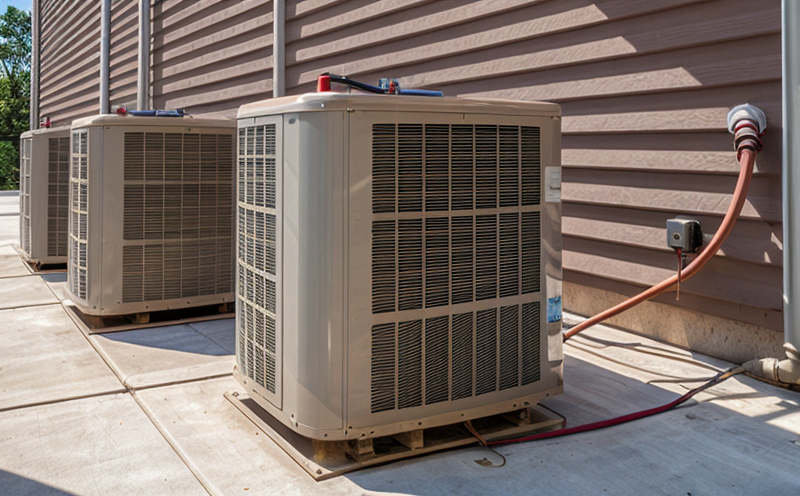ASHRAE 170 Ventilation of Healthcare Facilities
The ASHRAE Standard 170-2023 is a critical document that specifies the minimum ventilation requirements for healthcare facilities to ensure the delivery of clean and safe air. This standard aims to protect patients, visitors, and staff by preventing the transmission of airborne infections and other contaminants within these environments.
Compliance with ASHRAE 170 is mandatory in many regions where healthcare operations are conducted, ensuring that facilities meet stringent ventilation requirements as defined by the American Society of Heating, Refrigerating, and Air-Conditioning Engineers. The standard covers various aspects of HVAC systems, including design, installation, operation, and maintenance.
The primary focus of ASHRAE 170 is on the prevention of the spread of airborne pathogens through proper ventilation practices. This involves not only ensuring adequate airflow but also controlling air movement to prevent contamination from one area to another within a healthcare facility. Proper design and operation of HVAC systems are essential to achieve these goals.
Design requirements under ASHRAE 170 include specifying the type, location, and capacity of ventilation equipment, as well as the methods for monitoring and controlling air flow. Installation guidelines ensure that all components are correctly positioned and connected according to manufacturer specifications and industry best practices.
Operation and maintenance protocols play a crucial role in maintaining compliance with ASHRAE 170. Regular inspections and adjustments help identify potential issues early, ensuring that the system continues to function optimally throughout its lifecycle. Proper training of facility staff is also emphasized to ensure they understand their roles in keeping the ventilation systems up to standard.
Testing plays a vital role in validating compliance with ASHRAE 170 standards. Routine testing helps identify any discrepancies between design specifications and actual performance, allowing for timely corrective actions if necessary. Testing can be conducted using various methods including tracer gas testing, particle counting, and pressure differential measurements.
Given the critical nature of healthcare facilities, it is important to choose a laboratory partner that specializes in this field. Our team has extensive experience in conducting ASHRAE 170 tests, ensuring accurate and reliable results every time. We employ state-of-the-art equipment and follow strict protocols to provide clients with comprehensive reports detailing their facility's compliance status.
| Test Method | Description |
|---|---|
| Tracer Gas Testing | This method involves introducing a known quantity of a tracer gas into the ventilation system and measuring its concentration at various points within the facility. It helps assess the effectiveness of air distribution throughout the building. |
| Particle Counting | Particle counters measure airborne particulates in different sizes, providing insights into the cleanliness level of the indoor environment. This is particularly important for maintaining hygienic conditions required by ASHRAE 170. |
| Pressure Differential Measurements | Measuring pressure differences between rooms helps ensure that air flows in the desired direction, preventing cross-contamination. This is crucial for maintaining a sterile environment within healthcare facilities. |
Environmental and Sustainability Contributions
Compliance with ASHRAE 170 not only ensures the health of occupants but also contributes positively to environmental sustainability. By reducing energy consumption through efficient HVAC systems, facilities can minimize their carbon footprint.
- Reduction in Energy Consumption: Efficient ventilation systems reduce unnecessary heating and cooling demands, leading to lower utility bills and reduced greenhouse gas emissions.
- Enhanced Indoor Air Quality: Properly ventilated spaces contribute to better indoor air quality, which is beneficial not only for occupants' health but also for the environment by reducing sick building syndrome incidences.
Competitive Advantage and Market Impact
Adhering to ASHRAE 170 standards can give healthcare facilities a competitive edge in several ways. Firstly, it enhances the reputation of the facility among patients, visitors, and staff by demonstrating commitment to safety and well-being.
- Improved Patient Satisfaction: A healthier indoor environment leads to better patient outcomes and higher satisfaction levels.
- Increased Staff Morale: Knowing that the work environment meets stringent health standards can boost morale among healthcare workers, leading to improved job performance.
Use Cases and Application Examples
The application of ASHRAE 170 is particularly relevant in various types of healthcare facilities including hospitals, clinics, and long-term care facilities. Below are some specific use cases:
- Hospital Outpatient Departments: Ensuring proper ventilation helps prevent the spread of infections among patients who may be immunocompromised.
- Emergency Rooms: Rapid response to any contamination issues is crucial, making ASHRAE 170 compliance essential for these critical areas.
- Laboratories and Research Facilities: Maintaining a sterile environment in laboratories supports accurate research findings while protecting the health of researchers working with potentially hazardous materials.





